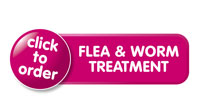Simple commands
If you are going to get on well with your dog, you will need to train it in two types of command: call and stop.
Many a dog has been saved from an accident by being able to obey these very simple commands. In both cases, you should begin training your new friend very early on. Education begins as soon as the puppy arrives in your home.
• Use simple words, and always the same ones. "Heel, Fido!" or "Rex, come!" will do just as well one as the other, as long as you do not change them.
• The younger the puppy, the more the training needs to be playful, and the shorter the sessions should be: 5 minutes at a stretch for a 3 month-old.
• Rewarding is always more effective.
• Disobedience is very often due to not understanding. Words mean little to a dog, so you should back them up with clear accompanying gestures which it can learn and interpret more quickly.
• As regards the call, never stand in front of your dog pointing at it and calling to heel!
Advice
For the first lessons, crouch, face away and call softly, tapping your thigh, "Come, boy!". This makes you attractive for your puppy, who will come, and be delighted to get a vigorous stroking as a reward.
Walking on a lead
Walking on a lead does not mean much to a dog. You are going to have to teach it this new relationship which binds it to its master or mistress.
• At first, you could put the collar and lead on your puppy, and let it get used to this little constraint.
• When you pull on the lead, do so gently. Give some little tugs, calling your dog's attention by clicking your tongue. As soon as it follows the direction of the lead, be it only for a yard or two, reward it with some vigorous strokes.
• Once the puppy begins to frisk alongside you on its lead, go on catching its attention with lots of little sound signals, so as to get it used to making regular visual contact with you. In this way, the physical leash is backed up by a vocal tether.
• Keep the lead slack: as soon as the puppy pulls, bring it back sharply to heel and slacken the lead straight away again, accompanying your gesture with always the same command: "Spot, here!" or "Flash, heel!". As soon as the dog goes a few yards without tugging, give it a stroke.
Advice
A tight leash is a transmission line for emotions and may trigger undesirable reactions, such as aggressiveness towards other dogs.
Taking your dog out
• While taking all necessary precautions not to expose it to pointless risks (places soiled by animals you do not know, and contact with unvaccinated animals), do walk your dog as soon as possible. In all likelihood, it is going to be spending its daily life in a completely different environment from that in which it was born and spent the first few weeks. To be truly at ease in its world, the puppy needs to encounter it regularly by its 13th week (i.e. its 3rd month).
• By walking your dog, you thus let it avoid falling victim to the "deprivation syndrome". This all too common behavioural affliction consists in severe difficulty in adapting to urban life and intense fear when in contact with strangers.
• Should your dog seem unduly afraid when you first take it out, do not stroke it for reassurance: you would be rewarding, and so reinforcing, its fear! Just act as though nothing is wrong and start a game with it by way of distraction. If this is just too hard and your puppy is unable to respond to you in this way, do not hesitate to talk things over with the Vet.
Hierarchy
Finally, to properly respect your dog's nature, you should fix its place in a hierarchical structure. You should take on the dominant role yourself, and let your dog enjoy the peace of mind that comes with the submissive role in the pack. The dominant animals are the ones which take charge of the smooth operation of the group, settling the place of each member, their comings and goings and all the rituals of daily life. Therefore, it is not a matter of shouting and hitting, but of exercising an everyday authority which can reassure your dog and ensure a settled place for it.
• Feed your dog after you yourself have eaten, and share nothing with it at table. What to you seems to be an act of friendliness could be seen as a sign of submissiveness (not to mention the nutritional confusion!).
• Do not allow your dog to choose a sleeping place which is at a strategic location. Bedrooms, the entrance hall or corridors are thus unsuitable places to put your new little friend's basket.
If you take care of these two very important points, you will run little risk of your dog developing a hierarchically aggressive behaviour pattern.
While your dog is still a puppy, if it does something it shouldn't, then respond as its mother would: lift it up firmly by the scruff of its neck and hold it hanging there until it calms down. When it does, put it down and stroke its shoulder (pacification signal). This sequence, far more than anything else, will teach it that you consider yourself to be the dominant animal in the relationship.
Claude Beata
Veterinary Surgeon








